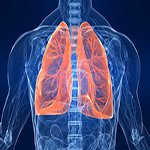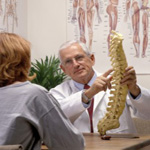The American Medical Association has announced an update to Current Procedural Terminology (CPT)®, that includes eight new codes for the bivalent COVID-19 vaccine booster doses from Moderna and Pfizer-BioNTech. The updated boosters are adapted for the BA.4 and BA.5 Omicron subvariants and the original coronavirus strain in a single dose. Four of the eight CPT codes (91312, … [Read more...] about CPT update for COVID-19 boosters adapted to omicron
Coding Alert
OIG issues fraud alert on pharmaceutical company in-person speaker programs
Before the pandemic put the chill on live conference events, it was fairly common for pharmaceutical companies, device makers and diagnostics companies to offer healthcare professionals fees for in-person speaking appearances. Such practices raise red flags under the federal Anti-Kickback Statute (AKS) when those speakers recommend the products of those companies to their … [Read more...] about OIG issues fraud alert on pharmaceutical company in-person speaker programs
Physicians should consider these overlooked codes
By Lisa Eramo bio It’s a common complaint heard among primary care physicians: Evaluation and management (E/M) codes don’t adequately capture the time, skill, and resources necessary to plan and coordinate care for patients with complex medical needs. Although new, streamlined E/M guidelines for 2021 may help, several existing remedies can enable physicians to capture … [Read more...] about Physicians should consider these overlooked codes
Reasons for health services encounter get codes in Chapter 21 of ICD-10
By Judy Monestime bio Codes included in Chapter 21, Factors influencing health status and contact with health services (Z00-Z99), represent reasons for encounter. Z codes are provided for encounters when circumstances other than diseases or injury are recorded in the medical record as the diagnosis. The chapter includes the following sections: Z00-Z13, Persons encountering … [Read more...] about Reasons for health services encounter get codes in Chapter 21 of ICD-10
Frequently coded conditions in Chapter 4 of ICD-10 CM
By Judy Monestime bio Chapter 4 in ICD-10 CM contains codes for endocrine, nutritional and metabolic diseases (E00-E89). The chapter includes frequently coded conditions such as disorders of the thyroid gland, obesity, dehydration, and diabetes mellitus. This chapter contains the following blocks: E00-E07 Disorders of thyroid gland E08-E13 Diabetes mellitus … [Read more...] about Frequently coded conditions in Chapter 4 of ICD-10 CM
Multiple coding now required for nervous system diseases
By Judy Monestime bio ICD-10 CM's Chapter 6 Diseases of the Nervous System (G00-G99) includes diseases of the central and peripheral nervous systems as well as epilepsy, migraine, and other headache syndromes. Many codes include a combination of conditions, such as persistent migraine aura with cerebral infarction, intractable (G43.61-). The following conditions have been … [Read more...] about Multiple coding now required for nervous system diseases
Coding tips for respiratory diseases
By Judy Monestime bio ICD-10-CM Chapter 10, "Diseases of the Respiratory System (J00–J99)," identifies codes for a wide variety of pulmonary conditions, ranging from acute upper respiratory infections, pneumonia, influenza, asthma, as well as diseases of the lower respiratory tract including chronic lung diseases and diseases acquired from exposure to external substances. … [Read more...] about Coding tips for respiratory diseases
ICD-10 is more detailed for osteoporosis and musculoskeletal conditions than ICD-9
ICD-10 M81 Osteoporosis without current pathological fracture By Judy Monestime bio Chapter 13 Diseases of the musculoskeletal system and connective tissue (M00-M99); M stands for Musculoskeletal, contains many more subchapters, categories, and codes than ICD-9-CM. Rather than having just four subchapters grouping many conditions together, ICD-10-CM organizes the … [Read more...] about ICD-10 is more detailed for osteoporosis and musculoskeletal conditions than ICD-9
Chapter 21: Factors influencing health status and contact with health services (Z00-Z99)
By Judy Monestime bio Chapter 21 in ICD-10-CM contains codes for factors influencing health status and contact with health services. There are differences in ICD-10-CM from what is currently found in ICD-9-CM. Some categories in Chapter 21 have rephrased titles to better reflect the situations the codes classify. For example, elective, legal, or therapeutic abortions have … [Read more...] about Chapter 21: Factors influencing health status and contact with health services (Z00-Z99)
Chapter on diseases of the skin and subcutaneous tissue is a total revamp
By Judy Monestime bio ICD-10-CM Chapter 12, "Diseases of the Skin and Subcutaneous Tissue (L00-L99)," represents a complete restructuring to bring together groups of diseases that are related to one another in some way. For example, dermatitis and eczema are separated from urticaria and erythematous conditions. Additionally, greater specificity has been added to … [Read more...] about Chapter on diseases of the skin and subcutaneous tissue is a total revamp









